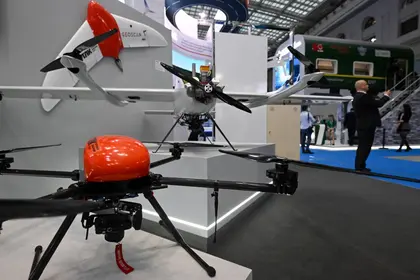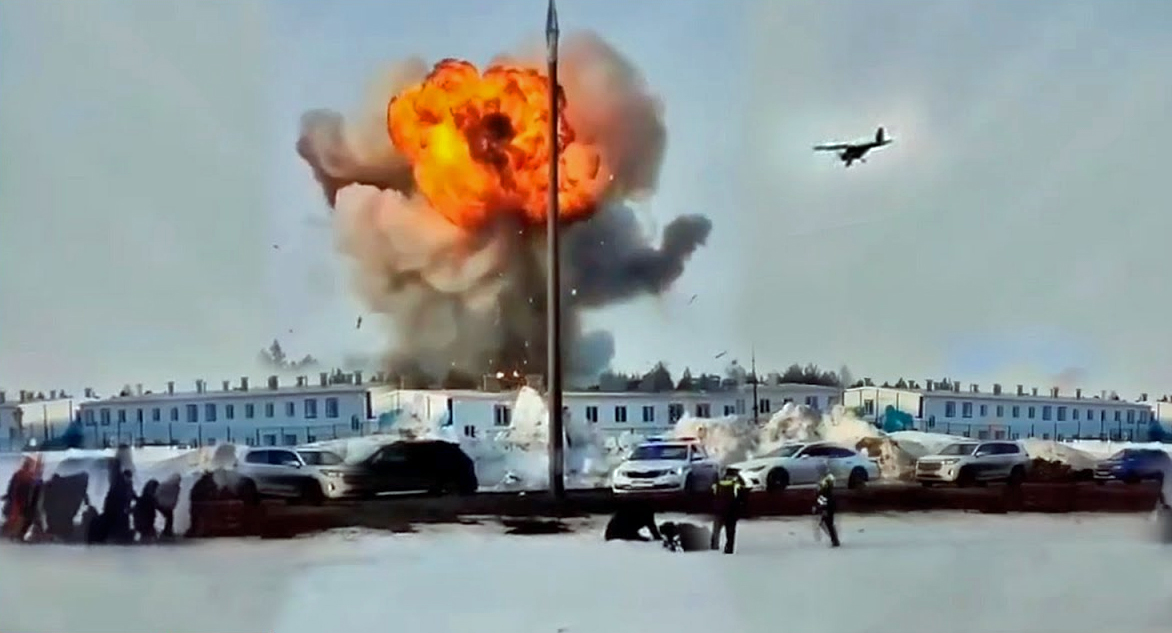The deputy chief of Ukraine’s Military Intelligence Directorate (HUR) said Russia has shifted to war production and is capable of producing increased numbers of missiles and loitering munitions, but had to immediately send almost all of them to Ukraine fresh from the factory because of shortages.
Maj Gen Vadym Skibitsky, HUR’s deputy chief, commented on Russian missile and drone strikes and capabilities in an interview with RBC Ukraine.
JOIN US ON TELEGRAM
Follow our coverage of the war on the @Kyivpost_official.
Skibitsky said Russia is capable of producing up to 115-130 strategic missiles a month but the actual number delivered varies. He also noted that cruise missiles made in the third and fourth quarter of last year were discovered in Ukraine, an indicator that they came fresh from the factory.
“This once again shows that their reserves are not very large, and what is produced is immediately used against our state,” he said.
He added that some strategic missiles, such as the Kinzhal hypersonic missiles and Kalibr cruise missiles, consist of foreign components and Russia has difficulty producing them due to Western sanctions, and there was zero production of certain missiles in December as a result.
On top of that, he said Russia needs to preserve 30 percent of its strategic reserve, therefore it has not launched Kh-101 Raduga and Kalibr cruise missiles since mid-September last year.
He added that the air-launched Kh-59 Ovod cruise missile used to attack Ukraine in recent days – alongside the Kh-31, Kh-35 and Kh-29 variants – were mostly used to attack Ukrainian air defenses and radar stations prior to conducting a massive strike.

$16 Million Worth of Shahed Parts Lost as Warehouse Burns Down - HUR
He said they consist of mostly Russian components and they are not considered a strategic missile, and they are capable of producing 100-115 missiles of this class each month.
In terms of drones, he said Russia can produce 330-350 Shahed/Geran drones a month, as it did in December, and it has at least two production lines located inside the country.
“In terms of production, the Russians did have the first contract to supply unmanned aerial vehicles from Iranian territory. After that, they set up their own production, it already works on the territory of Russia, in particular in Yelabuz,” he said.
He said 770-780 Shahed drones were used to attack Ukraine in December alone without including about 4 percent of drone failures, which failed or detonated upon launch. This information was based on “confirmed data from the Russia side.”
Most Shahed components were sourced from abroad, with an increase in the varieties and types used depending on the date of production.
“[...] if we talk about the engines in the Shaheds, then earlier they were a maximum of two different companies, but now we are talking about at least 3-4 different companies, including Chinese ones,” said Skibitsky.
In terms of Russia’s capability to produce the Shahed drones domestically, Skibitsky said it is capable of producing certain components and aims to reach full domestic production by 2026.
“I am not sure that they will be able to replace or find a Russian analog, for example, of the electronic base – microcircuits, chips, etc. But the Russian Federation is able to manufacture starters, [hulls], [warheads], engines, and other elements of the navigation system today,” he said.
He said the majority of components used in Russian weapon production – especially electronics – came through China as it is has not imposed sanctions on Russia.
“Many different joint ventures have been created, firms that appear for a week, make some purchases, and then disappear,” he said.
In terms of Russia’s defense industry, Skibitsky said Moscow adopted a series of laws and regulations in the summer of 2022, essentially shifting to wartime operations.
However, he said Ukraine did not notice a significant increase in Russian production.
“The enemy is trying to establish and increase the production of weapons and ammunition, but faces a number of problems. This is outdated equipment, this is a shortage of trained workers capable of performing such high-tech work, and this is a shortage of components,” he said.
The largest Russian missile strike on Ukraine took place on Dec. 29, when Russia launched more than 100 missiles alongside other munitions at Ukraine at an estimated cost of at least $1.2 billion.
You can also highlight the text and press Ctrl + Enter






